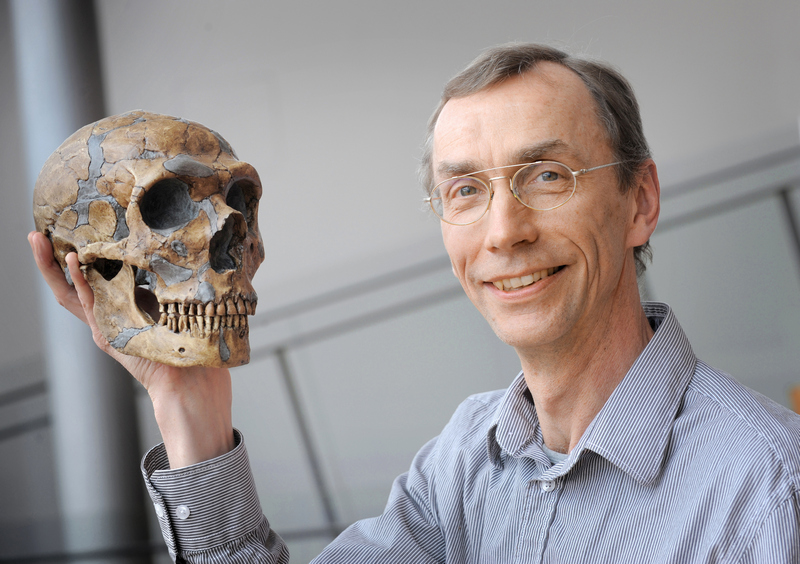Investigating the origin of humanity is one of the primary fields of study of scientists. Groundbreaking with his work in this field, Svante Pääbo achieved many seemingly impossible feats and was awarded the 2022 Nobel Prize in Physiology or Medicine.
Pääbo fully revealed the genome of the extinct Neanderthal (Homo neanderthalensis), as well as the sensational discovery of a previously unknown hominin, Denisovan (Denisova hominins). Furthermore, Pääbo discovered that gene transfer from these extinct hominins to modern humans (Homo sapiens) occurred around 70,000 years ago after migration from Africa. It was these studies that brought Pääbo the Nobel Prize.

Pääbo’s discoveries revolutionised our understanding of human evolution. At the time Homo sapiens migrated from Africa, Eurasia was home to at least two extinct hominin populations. Neanderthals lived in western Eurasia, while Denisovans lived in the continent’s east. It was discovered that during Homo sapiens’ expansion and eastward migration out of Africa, they met and interbred not only with Neanderthals but also with Denisovans. Pääbo’s findings have provided us with the knowledge that ancient gene sequences from our extinct ancestors had an impact on the physiology of modern humans. It is known, for example, that the EPAS1 gene, which provides high-altitude survival advantage and is common among Tibetans today, has Denisovan ancestry. Another example is genes inherited from Neanderthals that influence modern humans’ immune responses to various types of infections.
Annotation
Pääbo’s research gave rise to a new scientific field known as paleogenomics. Paleogenomics is a branch of science concerned with the reconstruction and analysis of genomic data from extinct species. This discipline essentially seeks to answer the questions of what genetic differences distinguish modern humans from extinct hominins and what distinguishes modern humans.
Homo sapiens is distinguished by its unique ability to create complex cultures, advanced innovation and creativity, and the ability to cross open waters and spread across our planet. Neanderthals were also social creatures with large brains. Despite they have the ability to use tools, they have changed little over hundreds of thousands of years. Pääbo’s research revealed genetic differences between Homo sapiens and our closest extinct relatives. Research in this area is ongoing, and gaps in understanding what makes modern humans unique are being filled.
Major studies of Svante Pääbo
- Green RE, Krause J, Briggs AW, Maricic T, Stenzel U, Kircher M, Patterson N, Li H, Zhai W, Fritz MH, Hansen NF, Durand EY, Malaspinas AS, Jensen JD, Marques-Bonet T, Alkan C, Prüfer K, Meyer M, Burbano HA, Good JM, Schultz R, Aximu-Petri A, Butthof A, Höber B, Höffner B, Siegemund M, Weihmann A, Nusbaum C, Lander ES, Russ C, Novod N, Affourtit J, Egholm M, Verna C, Rudan P, Brajkovic D, Kucan Ž, Gušic I, Doronichev VB, Golovanova LV, Lalueza-Fox C, de la Rasilla M, Fortea J, Rosas A, Schmitz RW, Johnson PLF, Eichler EE, Falush D, Birney E, Mullikin JC, Slatkin M, Nielsen R, Kelso J, Lachmann M, Reich D, Pääbo S. A draft sequence of the Neandertal genome. Science. 2010 May 7;328(5979):710-722. doi: 10.1126/science.1188021.
- Krause J, Fu Q, Good JM, Viola B, Shunkov MV, Derevianko AP, Pääbo S. The complete mitochondrial DNA genome of an unknown hominin from southern Siberia. Nature. 2010 Apr 8;464(7290):894-7. doi: 10.1038/nature08976.
- Pääbo S. Molecular cloning of Ancient Egyptian mummy DNA. Nature. 1985 Apr 18-24;314(6012):644-5. doi: 10.1038/314644a0.
- Krings M, Stone A, Schmitz RW, Krainitzki H, Stoneking M, Pääbo S. Neandertal DNA sequences and the origin of modern humans. Cell. 1997 Jul 11;90(1):19-30. doi: 10.1016/s0092-8674(00)80310-4.
- Reich D, Green RE, Kircher M, Krause J, Patterson N, Durand EY, Viola B, Briggs AW, Stenzel U, Johnson PL, Maricic T, Good JM, Marques-Bonet T, Alkan C, Fu Q, Mallick S, Li H, Meyer M, Eichler EE, Stoneking M, Richards M, Talamo S, Shunkov MV, Derevianko AP, Hublin JJ, Kelso J, Slatkin M, Pääbo S. Genetic history of an archaic hominin group from Denisova Cave in Siberia. Nature. 2010 Dec 23;468(7327):1053-60. doi: 10.1038/nature09710.
- Slon V, Mafessoni F, Vernot B, de Filippo C, Grote S, Viola B, Hajdinjak M, Peyrégne S, Nagel S, Brown S, Douka K, Higham T, Kozlikin MB, Shunkov MV, Derevianko AP, Kelso J, Meyer M, Prüfer K, Pääbo S. The genome of the offspring of a Neanderthal mother and a Denisovan father. Nature. 2018 Sep;561(7721):113-116. doi: 10.1038/s41586-018-0455-x.
- Pinson A, Xing L, Namba T, Kalebic N, Peters J, Oegema CE, Traikov S, Reppe K, Riesenberg S, Maricic T, Derihaci R, Wimberger P, Pääbo S, Huttner WB. Human TKTL1 implies greater neurogenesis in frontal neocortex of modern humans than Neanderthals. Science. 2022 Sep 9;377(6611):eabl6422. doi: 10.1126/science.abl6422.
Source: The Nobel Prize in Physiology or Medicine 2022. NobelPrize.org. Nobel Prize Outreach AB 2022. Wed. 12 Oct 2022. https://www.nobelprize.org/prizes/medicine/2022/press-release/

